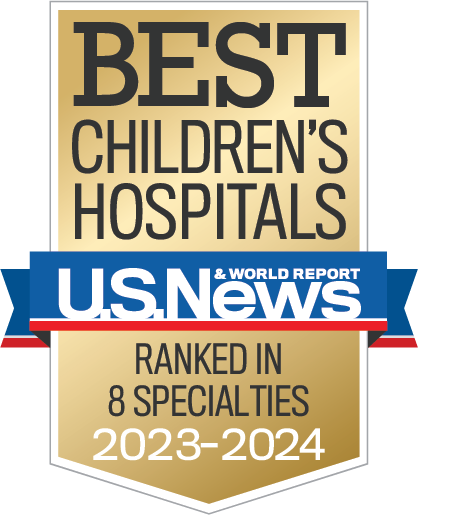Acetaminophen – commonly known as the brand Tylenol – and ibuprofen – commonly known as the brand Motrin or Advil – are both over-the-counter medicines taken to relieve fever, aches and pain. They are both safe when used correctly, but too high a dose can make children very sick.
But what else is different about these two medications, and what should parents know when using these drugs? In this guide, Dr. Ericka Hong, a pediatrician in the CHOC Primary Care Network, helps explain the differences between acetaminophen and ibuprofen and how parents can administer it safely.
What is the difference between acetaminophen and ibuprofen?
| Acetaminophen | Ibuprofen | |
|---|---|---|
| What does it do? | A drug called an analgesic, acetaminophen reduces pain signals from the body’s nervous system. | Called a nonsteroidal anti-inflammatory drug (NSAID), ibuprofen can help with pain stemming from inflammation, redness, swelling or heat pain. |
| Other names | Acetaminophen is the generic name of this drug. In some other countries, acetaminophen is known as paracetamol. Many generic brands of acetaminophen are available. The most common brand name for this medicine is Tylenol®, but it is also sold under the names Panadol®, FeverAll®, and Tempra®. | Ibuprofen is the generic name for this drug. The most common brand names for ibuprofen in the United States are Advil® and Motrin®. |
| Types available | For kids, this medicine is available in oral suspensions (liquid form) and also chewable tablets. Rectal suppositories (FeverAll® or Tempra®) are available for children who have trouble taking medicine by mouth or can’t keep medicines down due to vomiting. Tylenol® makes Infants’ Tylenol® (“drops”) and Children’s Tylenol® oral suspensions, as well as Jr. Tylenol® chewable tablets. Many generic brands of acetaminophen are available in similar forms. Tylenol® and other brands that make infant drops used to offer them in a more concentrated formula, which was 80 mg/0.8 ml per dose. These drops were taken off the market because of accidental overdose when parents used kitchen teaspoons or measuring cups from Children’s Tylenol®. If you have Infants’ Tylenol® or a similar product in the 80 mg strength, throw it away and do not give it to your child. The new infant drops have the same concentration as Children’s Tylenol® (160 mg/5 ml per dose). | For kids, this medicine is available in oral suspensions (liquid form), chewables and tablets. Rectal ibuprofen suppositories are not available in the United States. Advil® makes Infants Advil® Drops and Children’s Advil® Suspension, as well as Jr. Strength Advil® Chewables and Jr. Strength Advil® Tablets. Motrin® makes Motrin® Infants’ Drops and Children’s Motrin® Oral Suspension. Other brands of ibuprofen are available in similar forms. |
How can I properly give acetaminophen or ibuprofen to my child?
Too much acetaminophen can lead to liver damage and in rare cases, death. Too much ibuprofen can lead to stomach problems, confusion and possible kidney damage. For both medications, it’s critical that parents know how much medication to give a child.
Early symptoms of acetaminophen or ibuprofen overdose includes vomiting, nausea, stomach pain, paleness and tiredness. If a parent suspects their child has overdosed on acetaminophen, call poison control immediately at 800-222-1222.
If you have any questions about giving ibuprofen or acetaminophen to your child, ask your pediatrician or pharmacist.
To safely give these medications, follow these steps, noting some differences between the two:
| Step | Acetaminophen | Ibuprofen |
|---|---|---|
| Check the expiration date. | With either medication, check the expiration date to make sure it’s not expired. If it is, throw away the medicine and purchase a new product. For proper disposal, remove the medicine from its original container and place it in an undesirable substance that children or animals wouldn’t be tempted to eat, like coffee grounds or kitty litter. Then, put it in a sealable bag inside a garbage can. | |
| Check if the child is taking other medications with the drug. | Make sure your child isn’t already taking medicines with acetaminophen in them. Acetaminophen is a very common ingredient in cough, cold and allergy medicines. If your child is taking one, talk to your pediatrician or pharmacist before giving your child more acetaminophen. Too much acetaminophen can damage a child’s liver. | Make sure your child is not taking other medicines with ibuprofen in them. Ibuprofen is a very common ingredient in cough, cold and allergy medicines. If your child is taking one, talk to your pediatrician or pharmacist before giving your child more ibuprofen. Too much ibuprofen can damage the stomach or kidneys. |
| Check the concentration and recommended dosage. | Check the concentration and recommended dosage. This will help ensure that your child gets the right number of milliliters, or ml (also called cc, or cubic centimeters), and doesn’t overdose. Chewables are not recommended for children younger than 2 years old due to the risk of choking. | Check the concentration and recommended dosage. This is especially important when giving the infant concentrated drops, which are more potent than the children’s suspension concentration. This will help ensure that your child gets the right number of milliliters, or ml (also called cc, or cubic centimeters), and doesn’t overdose. Chewables or tablets are not recommended for children younger than 2 years old due to the risk of choking. |
| Use the right distribution method. | With either medication, give your child a dose from the dropper, syringe or cup that came with the product. Never use a measuring spoon from the kitchen or a cup or dropper from a different product. | |
| Pay special attention in cases of fever. | When giving for a fever, consider the child’s temperature and age.If you have an infant 3 months or younger with a rectal temperature of 100.4°F (38°C) or higher, call your doctor or go to the emergency department. If your child is between 3 months and 3 years old and has a fever of 101°F (38.3°C) or higher, call your doctor to find out if he or she needs to see your child. | |
| Take next steps after vomit or spitting up. | If your child spits up or vomits up a dose of acetaminophen within the first 15 minutes, it’s usually safe to give your child another dose, but check with your pediatrician if you’re unsure. If your child holds the first dose down for longer than 15 minutes before spitting up, you should wait four hours before giving your child another dose. | If your child spits up or vomits up a dose of ibuprofen within the first 15 minutes, it’s usually safe to give your child another dose, but check with your pediatrician if you’re unsure. If your child holds the first dose down for longer than 15 minutes before spitting up, you should wait 6 hours before giving your child another dose. |
| Follow the correct time between doses. | Give acetaminophen every four to six hours as needed, but never give your child more than five doses in 24 hours. | Give every six to eight hours as needed, but never give your child more than four doses in 24 hours. |
| Watch for dye/flavor sensitivities. | Both medications come in varying flavors and without dyes. If your child is sensitive to either, look for an alternative. | |
What is the correct acetaminophen dosage for children?
Dr. Hong recommends using a child’s weight instead of age when figuring out how much medicine to give. This table is based on experts’ and the manufacturers’ recommendations. It is not intended to replace the advice of a doctor. Before giving your child a dose, check the label to ensure the recommended dosage and concentration agree with the numbers below.
Acetaminophen dosing should not exceed more than every 4 hours or 5 doses in a 24-hour period. Additionally, acetaminophen should not be given with other cough and cold medications that could contain acetaminophen.
If your child is 3 months or younger, consult your healthcare professional before giving the medicine. For any age, call your pediatrician you have any questions or concerns about giving acetaminophen, Dr. Hong says.
| Child’s Weight | Child’s Age | Infants’ Tylenol® Oral Suspension (160 mg/5 mL) | Children’s Tylenol® Oral Suspension (160 mg/5 mL) | Children’s Tylenol® Chewable Tablet (160 mg/tablet) | Children’s Tylenol® Dissolve Packet (160 mg/powder packet) |
|---|---|---|---|---|---|
| 6-11 lbs. | 0-3 months | Consult your provider | |||
| 12-17 lbs. | 4-11 months | 2.5 mL | |||
| 18-23 lbs. | 12-23 months | 3.75 mL | |||
| 24-35 lbs. | 2-3 years | 5 mL | 5 mL | 1 tablet | |
| 36-47 lbs. | 4-5 years | 7.5 mL | 1½ tablets | ||
| 48-59 lbs. | 6-8 years | 10 mL | 2 tablets | 2 packets | |
| 60-71 lbs. | 9-10 years | 12.5 mL | 2½ tablets | 2 packets | |
| 72-95 lbs. | 11 years | 15 mL | 3 tablets | 3 packets |
What is the correct ibuprofen dosage for children?
Dr. Hong recommends using a child’s weight instead of age when figuring out how much medicine to give. This table is based on experts’ and the manufacturers’ recommendations. It is not intended to replace the advice of a doctor. Before giving your child a dose, check the label to ensure the recommended dosage and concentration agree with the numbers below.
Ibuprofen of any form is not recommended for infants younger than 6 months old. Additional doses should be given no more frequently than every 6 hours. Consult your healthcare professional if you have any questions or concerns about giving ibuprofen, Dr. Hong says.
| Child’s Weight | Child’s Age | Infants’ Motrin® Oral Suspension Drops (50 mg / 1.25 mL) | Children’s Motrin® Oral Suspension (100 mg / 5mL) | Children’s Motrin® Chewable Tablet (100mg / tablet) |
|---|---|---|---|---|
| 12-17 lbs. | 6-11 months | 1.25 mL | ||
| 18-23 lbs. | 12-23 months | 1.875 mL | ||
| 24-35 lbs. | 2-3 years | 5 mL | 1 tablet | |
| 36-47 lbs. | 4-5 years | 7.5 mL | 1½ tablets | |
| 48-59 lbs. | 6-8 years | 10 mL | 2 tablets | |
| 60-71 lbs. | 9-10 years | 12.5 mL | 2½ tablets | |
| 72-95 lbs. | 11 years | 15 mL | 3 tablets |
How to alternate between ibuprofen and acetaminophen for a child’s fever
In cases of persistent fever, some parents may opt to alternate between ibuprofen and acetaminophen to reduce a child’s discomfort. When the fever is high, the medication might not bring the child’s temperature down to a normal body temperature, and that’s ok as long as the temperature comes down a little and the child is comfortable. Dr. Hong recommends that parents first consult with their pediatrician for advice about the causes of a persistent fever. After receiving the doctor’s OK, here is an example of how a parent might alternate between these two medications:
Noon – The child has a fever and the parent gives the proper dose of ibuprofen.
1 p.m. – The child still has a fever, the parent may opt to give a proper dose of acetaminophen.
2 p.m. – The child still has a fever. However, because four hours haven’t passed since the first dose of acetaminophen (given at 1 p.m.) and six hours haven’t passed since the first dose of ibuprofen (given at noon), no more medication can be given. Try other methods to help such as laying a cold washcloth on the child’s forehead.
3 p.m. – If the child still has a fever, it’s still too soon for more medication: Four hours haven’t passed since the first dose of acetaminophen (given at 1 p.m.) and six hours haven’t passed since the first dose of ibuprofen (given at noon), no more medication can be given. Try other methods to help such as laying a cold washcloth on the child’s forehead.
4 p.m. – It’s still too soon for more medication if the child’s fever persists. Four hours haven’t passed since the first dose of acetaminophen (given at 1 p.m.) and six hours haven’t passed since the first dose of ibuprofen (given at noon), no more medication can be given. Try other methods to help such as laying a cold washcloth on the child’s forehead.
5 p.m.— If the child still has a fever, a parent can now give a proper dose of acetaminophen, as it has been four hours since the first dose (1 p.m.).
6 p.m. – If the child’s fever persists, a parent can give a proper dose of ibuprofen, as it has been six hours since the first dose (noon).
Parents can continue to follow this model throughout the day. Remember that the interval between acetaminophen doses should be 4 hours and the interval between ibuprofen doses should be 6 hours. Dr. Hong recommends parents keep a log to ensure doses are properly spaced and that they do not exceed four doses of ibuprofen in a 24-hour period and five doses of acetaminophen in a 24-hour period.
Parents should not hesitate to contact the pediatrician if a child continues to have a persistent fever.
Naproxen, or Aleve® , for kids
Naproxen, commonly known as Aleve®, is used to treat fever, headache, toothache, muscle pain and inflammation (swelling). Naproxen and ibuprofen both belong to the class of medicines known as nonsteroidal anti-inflammatory drugs (NSAID).
Naproxen is safe to use in children 12 years and older. However, doctors may prescribe naproxen to younger children for inflammatory diseases such as arthritis. A single dose of naproxen lasts up to 12 hours and therefore requires less frequent doses than ibuprofen.
Naproxen dosing guidelines for children
| Age | Dose |
|---|---|
| Under 12 years old | Ask your doctor |
| 12 years+ | 1 tablet (220 mg) |
For more health and wellness resources from the pediatric experts at CHOC, sign up for the Kids Health newsletter.
Find a CHOC Primary Care Pediatrician
From babies to teens, pediatricians from CHOC’s Primary Care Network partner with parents to offer immunizations, sick visits, sports physicals and more.






